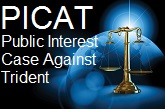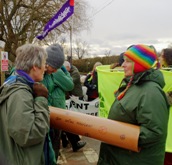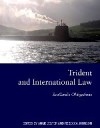by Marion Birch of the Nuclear Issues Group MEDACT
Why is it when 76% of the world’s population want their governments to abolish nuclear weapons within an agreed timeframe, and 144 states support a Nuclear Weapons Convention,[i] we still have an estimated 20,000 nuclear weapons in the world today?
Health – individual and public - would be one of the huge casualties of a nuclear attack; this also means that looking at nuclear weapons through the lens of health provides some of the strongest arguments against them.
The Medical Consequences of Nuclear Weapons,[ii] written by the Medical Campaign against Nuclear Weapons in 1982, and the Medical Effects of Nuclear War,[iii] written by the British Medical Association the following year, clearly described these effects and their evidence base. Since then professional campaigners have advised that campaigns that shock people too much are unlikely to be successful. Health promoters have also found that people switch off if what they are presented with is too terrible to contemplate.
Medact still believes that the health evidence is one of the most powerful tools to put the message across simply because it is the truth and people have a right to know. The action of general practitioners in the 1980s in refusing to distribute the UK government’s Protect and Survive pamphlet,[iv] was based on the public’s right to know that the information in the pamphlet was useless.
What are the health effects?[v]
The health effects of nuclear explosions are caused by thermal radiation or heat, air-blast, initial nuclear radiation and residual nuclear radiation or fallout. The effects of heat, air-blast and initial radiation are felt immediately after the explosion. The radiation dose from fallout is can affect people over an extended period.
The initial intense pulse of heat or thermal radiation would extensively burn skin and has the potential to start fires over large areas, which in turn can unite to form a firestorm, adding numerous further casualties, and preventing the escape of survivors.
Within a 200-metre radius of the explosion almost everyone would die; within a half kilometre radius any survivors would have third degree burns that destroy the full thickness of the skin. Within an 800-metre radius any survivors would have second degree burns which cause intense pain and blistering of the skin. People who watch the explosion – even from 13 miles away – will suffer temporary flash blindness, and retinal burns with permanent blindness if they focus on the source or core of the explosion. Even over half a mile away thin clothes may catch fire.
The damage caused by the air blast or shock wave from any explosion is compounded in a nuclear explosion. It is felt as a sudden and shattering blow, immediately followed by a hurricane force wind coming from the point of explosion.
Collapsing infrastructure, flying debris and people being thrown about at high speed are the main cause of death and injury; the air blast can also rupture eardrums and lungs. There is no running away as within about one and a half seconds the air blast has reached a 1 kilometre radius around the point of explosion. In areas further away fires may start from overturned stoves and broken gas lines causing further casualties.
The health effects of the intense ionizing radiation released when nuclear weapons are used compounds all these effects. Within a one kilometre radius of the point of explosion almost everyone will die due to the initial effects of radiation. Many others will die from the longer term effects of radiation caused by the resulting fallout.
Soil and other material mixes with the highly radioactive products of the explosion. This is carried by the wind and air currents and falls back to earth over a period of weeks as fallout. It may contaminate the skin, be inhaled, eaten or drank. What area, and how those in it will be affected, depends on the wind and exposure – for example whether or not people were behind a wall. Given a moderate wind radiation levels across an area of about 400 square kilometres would mean that people are at risk from long term effects such as cancers.
Different levels of radiation cause a range of symptoms from convulsions and death due to damage to nerves and blood vessels, to vomiting and diarrhoea. Effects can appear immediately, after 2-4 weeks, or much later; late onset effects include an increased incidence of cancer, thyroid disorders, cataracts, decreased fertility and hereditary disease. The long-term survivors of the nuclear bombs dropped on Hiroshima and Nagasaki in 1945 also suffer a statistically significant increase in hypertension, myocardial infarction, chronic liver disease and cirrhosis.
A London scenario
Various estimations have been made of the extent of the damage of a nuclear attack on London and other cities. One was a report for the Greater London Area War Risk Study Commission commissioned by the Greater London Council in 1984.[vi] This considered two nuclear attack scenarios: in the most severe 5-10 megatons (Mt) of nuclear warheads would fall on London, in the less severe 1.35Mt. They estimated that in the first 85% of Londoners would be killed or seriously injured, in the second one third of the city would be destroyed. In both London would enter into a downward spiral from which it would be difficult to recover.
It has to be remembered that this is the sort of threat the UK holds over others by maintaining a nuclear deterrence.
Climate effects
The health effects described above are the more direct ones. When it comes to public health and the environment the consequences spread far wider. In 2012 a report published by International Physicians for the Prevention of Nuclear War (of which Medact is the UK affiliate) made it clear that a nuclear exchange would disrupt our climate, causing long-lasting damage to global ecosystems.[vii] Grain prices would rocket and an estimated 925 million malnourished people could face starvation.
A 2011 study mentioned in the report estimated the effect on the price of food of a limited nuclear war (100 warheads of 15Kt each). [viii] Prices would rise due to the devastating effects on agricultural output and therefore food accessibility. It estimated that increases in food prices would create an additional 40 million malnourished people one year after the war, that the largest annual decline in food production would be in the fifth year after the war, with ongoing effects at 10 years and beyond.
Why do we risk it?
So why do we take the risk of hanging on to a weapon that could do this? And why do we allow our government to spend an estimated £97 billion over the next 30 years on the Trident nuclear weapons system,[ix] at a time of cuts to public services including the NHS.
The UK government’s line is that we need a deterrent as part of our national security strategy. A deterrent without possible use is nonsensical, and they have made it clear they would not take the use of these weapons ‘off the table’. They hold the threat of mass devastation over others as a stated means of maintaining peace. This has similarities to keeping a flame thrower in your garden shed in case you fall out with your neighbour over who cuts the hedge.
The UK’s Strategic Defence and Security Review[x] told us that it was necessary to keep Trident for our security: ‘We will retain and renew our independent nuclear deterrent – the United Kingdom’s ultimate insurance policy in this age of uncertainty’, and in general that we need to ‘respond to growing uncertainty about longer-term risks and threats’.
One interpretation of global security is mutual cooperation, investment in preserving common global goods, and a united strategy for external threats such as climate change. This sort of global security is not promoted by keeping a massively destructive weapon in case of unseen possible future threats. Keeping a nuclear weapon as a tool of power and dominance belongs to a far more militarised security, justified by a constant emphasis on uncertainty and unknown threat. This is not a healthy situation. Getting rid of Trident would be a significant step towards a security strategy based on collaboration and understanding rather than on intimidation and threat.
[i] World Public Opinion Poll (2008) http://www.icanw.org/polls#recent%20polls accessed 251012
[ii] Medical Campaign against Nuclear Weapons (1981) Medical Consequences of Nuclear Weapons ISBN 0 9507935 0 7
[iii] British Medical Association (1983) The Medical Effects of Nuclear War The Report of the British Medical Association’s Board of Science and Education ISBN 0471902071
[iv] HMSO (1980) Protect and Survive http://www.atomica.co.uk/main.htm accessed 241012
[v] Medact (2007) Britain’s New Nuclear Weapons http://www.medact.org/content/wmd_and_conflict/medacttridentbrief.pdf accessed 241012
[vi] GLAWARS Commission (1986) London under Attack South London Polytechnic Basil Blackwell Ltd ISBN 0631150188
[vii] Helfand I (2012) Nuclear Famine: a billion people at risk International Physicians for the Prevention of Nuclear War, Physicians for Social Responsibility http://www.ippnw.org/nuclear-famine.html accessed 241012
[viii] Webb et al (2011) Projected Impacts of a Regional Nuclear Conflict on Global Food Supply, Consumption and Undernutrition http://www.ippnw.org/pdf/projected-impacts-webb.pdf accessed 241012
[ix] Greenpeace (2009) In the Firing Line http://www.greenpeace.org.uk/files/pdfs/peace/ITFL_trident_report.pdf accessed 241012
[x] HM Governemnt (2010) Securing Britain in an Age of Uncertainty The Strategic Defence and Security Review http://www.direct.gov.uk/prod_consum_dg/groups/dg_digitalassets/@dg/@en/documents/digitalasset/dg_191634.pdf accessed 241012












 Nuclear weapons crime in the UK has been reported to Thames Valley Police.
Nuclear weapons crime in the UK has been reported to Thames Valley Police.










